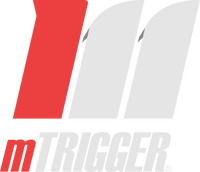Top 10 Applications for mTrigger Biofeedback
Adding biofeedback to your clinical practice is an easy and effective way to improve patient engagement, enhance muscle performance, and develop correct movement patterns. mTrigger biofeedback is a surface EMG device that is simple, easy to use, portable, and connects via Bluetooth to an Android or Apple app. mTrigger is designed for clinical use with the benefits of surface EMG biofeedback spanning across orthopedics, sports, neurology, stroke, hand therapy, and many more. Once you understand how to use mTrigger biofeedback, there are endless possibilities. To help break it down and give you an idea of where to start, here are the Top 10 uses for mTrigger biofeedback.
1.Muscle Activation: for improving the muscle activation of a target muscle through volitional control. A excellent examples would be the quadriceps after knee surgery, the glutes with low back pain, or the rotator cuff with shoulder pain / surgery.
- Quad sets
2. Movement Symmetry: for addressing and improving the symmetry of movement by using the dual channel set up. This is ideal for movements where weight shifting, or lack of movement symmetry is seen following an injury. Here are some great examples.
- Squats
- Deadlifts
- Heel raise
- Scaption/Pulling/Pushing
3. Compensation: for improving the relative activation of synergistic or antagonistic muscles.
- Scaption (upper trap/lower trap)
- Depression (upper trap/lower trap)
- Prone Hip Extension (lumbar paraspinals/glutes/hamstrings)
- Quad set (quad / hamstring)
4. Relaxation: for decreasing high levels of resting muscle tone or guarding as a result of stroke, surgery, pain, etc.
- Prone hang
- Standing lumbar flexion/relaxation
5. Eccentrics: for improving the muscle output during the eccentric portion of an exercise. This can be immensely helpful for improving strength and gaining /maintaining muscle activation during the most demanding part of the exercise.
- Banded ER
- Lunge sliders
6. Neuromuscular Deficit Testing: for determining the deficit of an involved muscle compared to the uninvolved side. This is a phenomenal application for measuring patient progress in an objective and quantifiable way.
- Quad set or SLR
- Squat
- Single leg squat
- Hamstring
- ER
7. Live Tracking: for watching gait or running in real time. This is also an excellent option if you want to see lower levels of activation in real time such as following a nerve injury or very early on after surgery.
- Running
- Walking
- Nerve Injury (lower activation levels)
8. Sport Testing: dynamic testing applications for gathering additional information on the muscle activation during sports testing. This is a unique and helpful feature for clinicians gathering more information on performance measure and readiness to return to sport on a muscle physiology level.
- Triple hop
- Backwards hop
- Drop land
- Running Stop/Deceleration
9. Games: for making rehab more engaging, motivating, and enjoyable, games are best when used in single channel mode. Here are some example of using mTrigger biofeedback game in practice. The games can be used with most single channel exercises.
- Muscle Ball - No Rest Protocol
- Drift
- Trail Blazer
- Flex Sled
10. Training with mTrigger biofeedback is just more FUN!
Summary
mTrigger biofeedback is an easy and effective way to improve your patient’s engagement, muscle activation, and overall results. Starting off with simple muscle activation exercises and progressing to more advanced testing and games, mTrigger biofeedback has something to offer all clinicians and patient populations. The more you use mTrigger biofeedback with your patients the more opportunities you will discover and the more creative you can get.
mTrigger Biofeedback for Athletic Trainers
|
How to Gamify Patient Care
|


Leave a comment